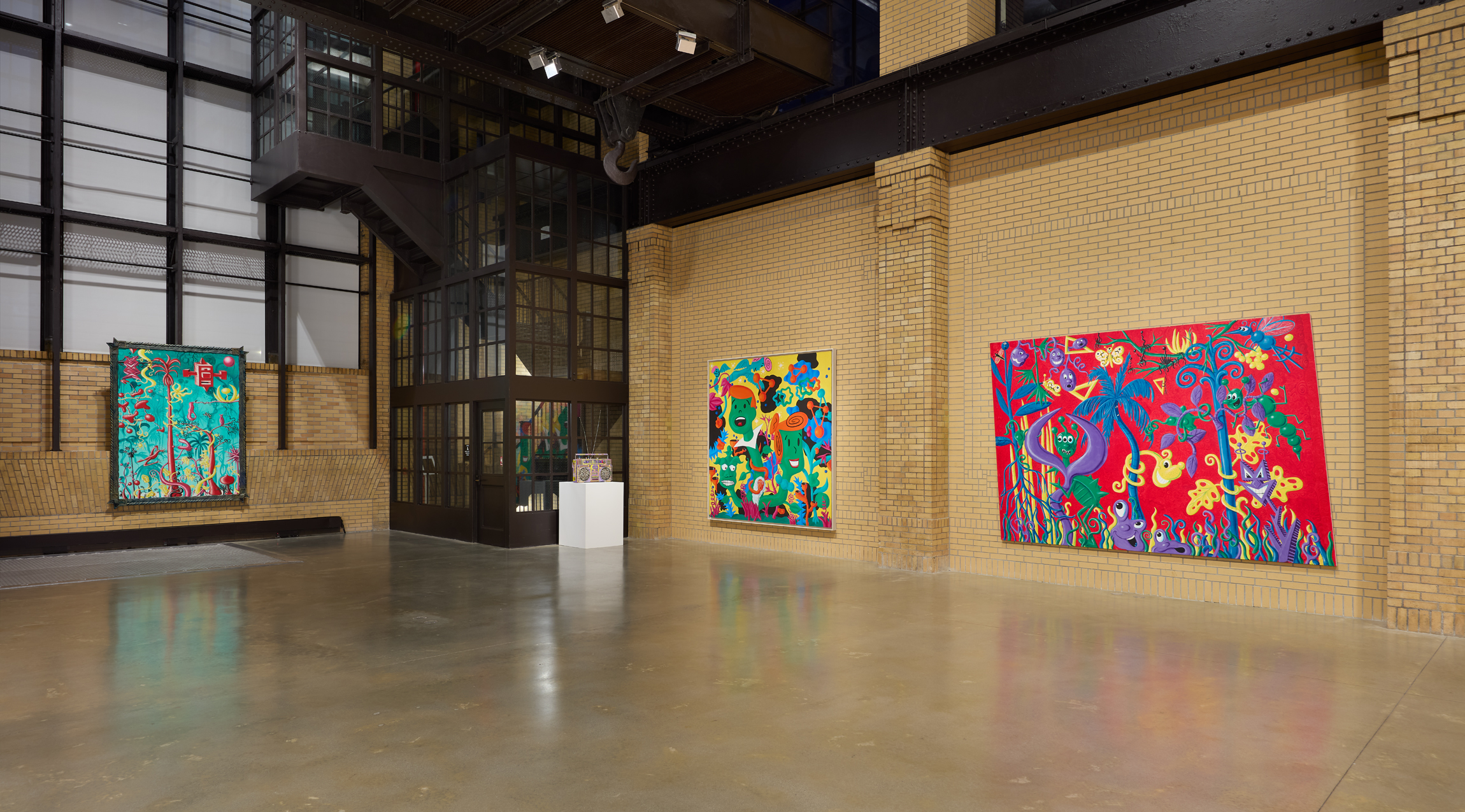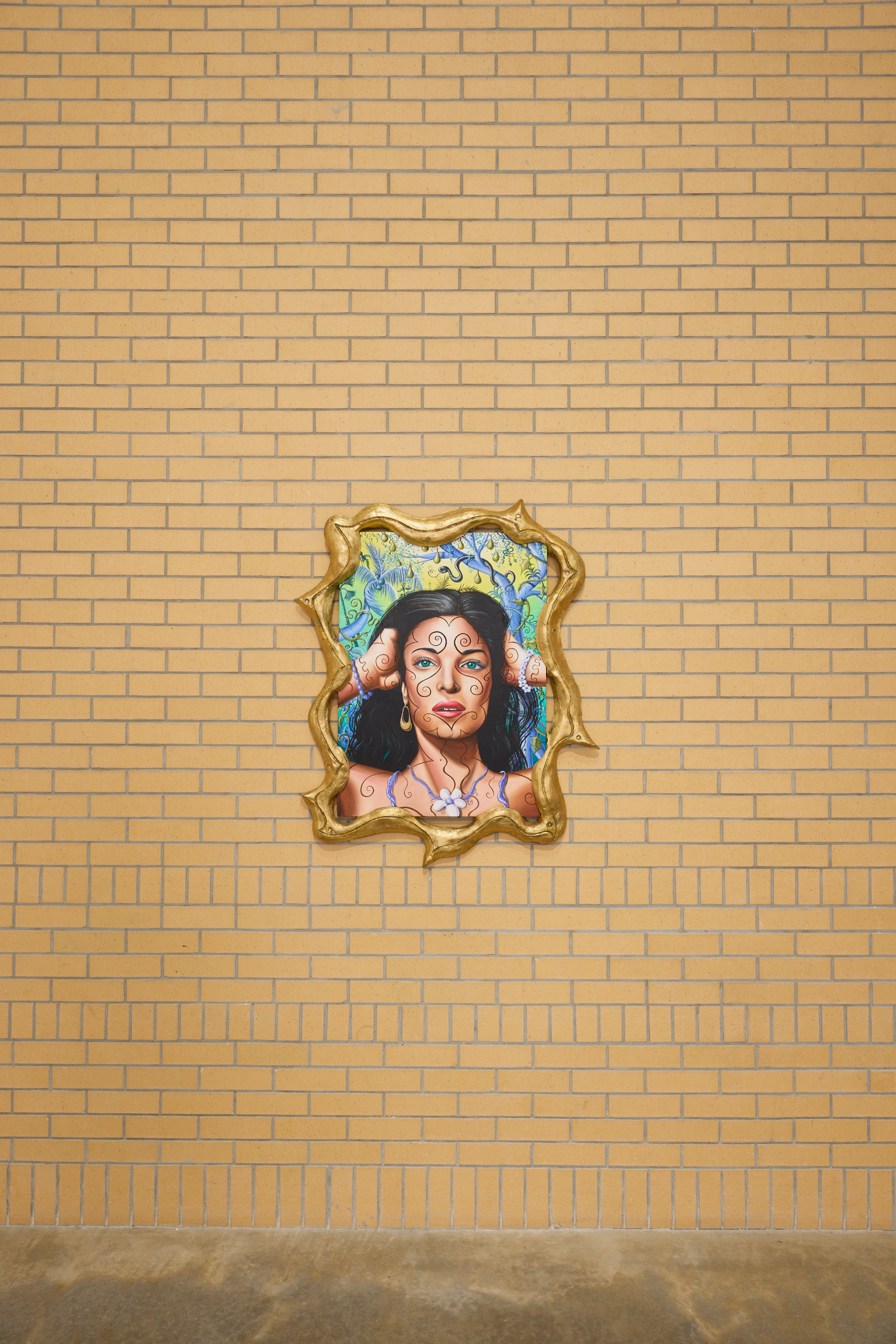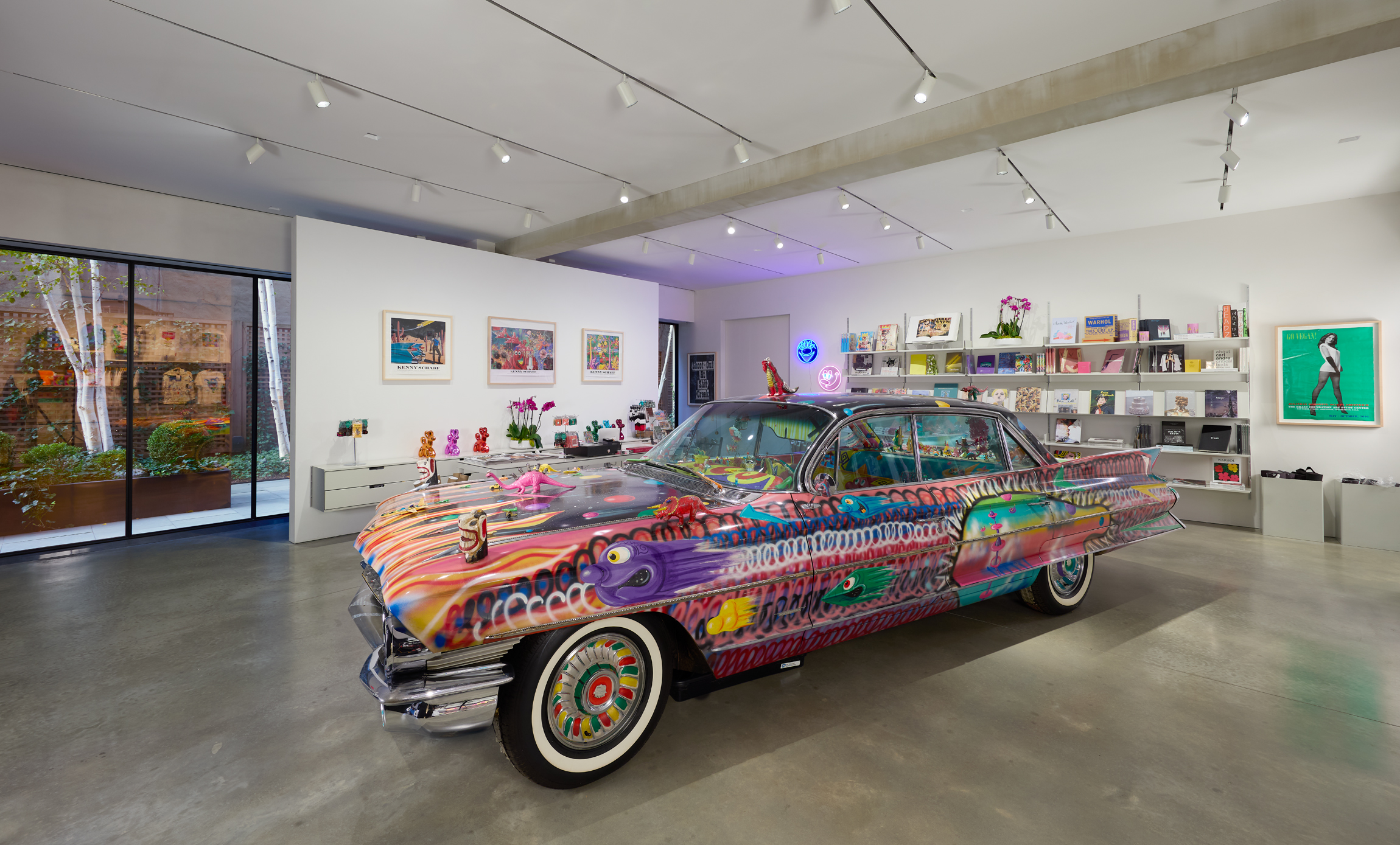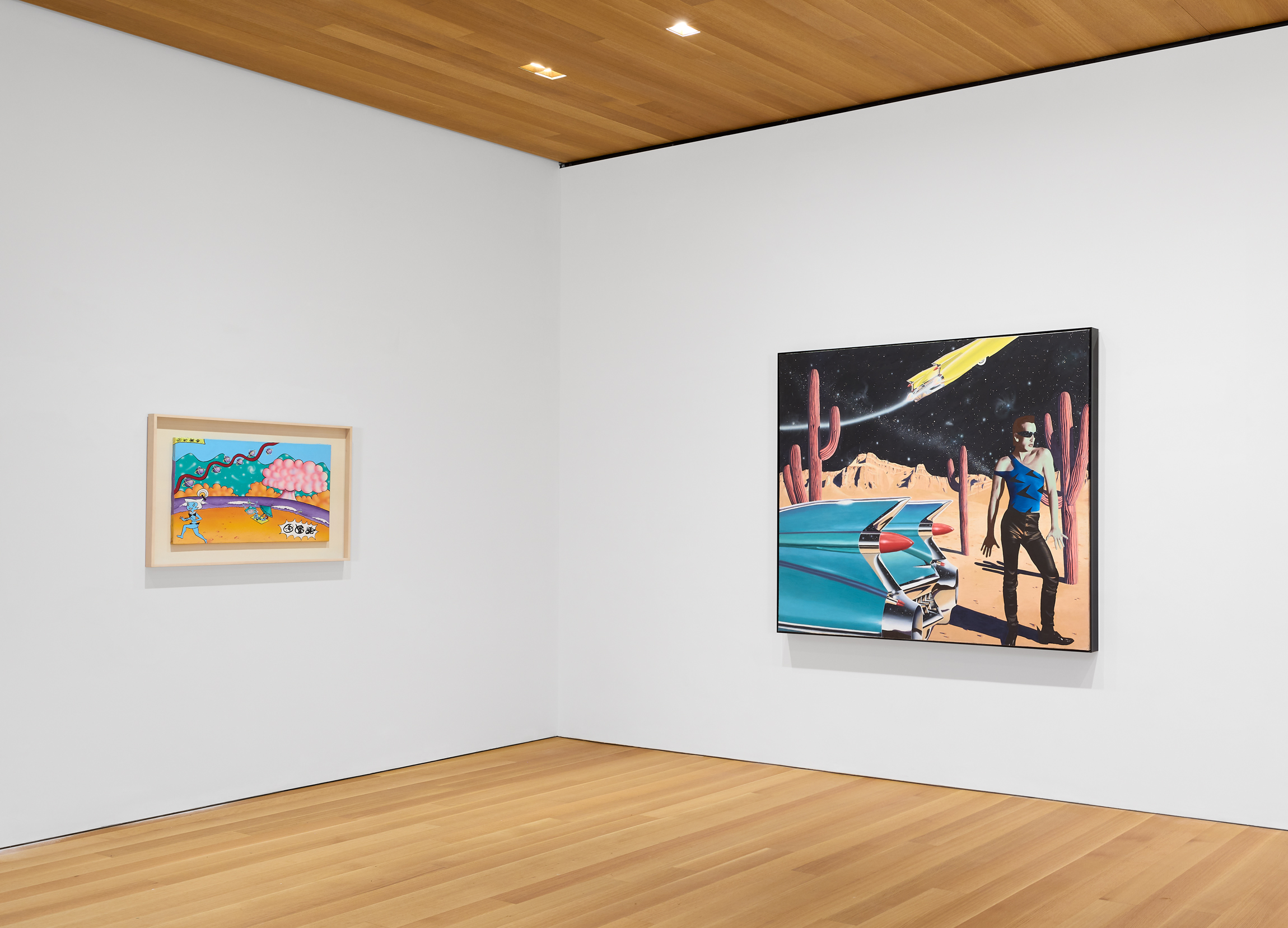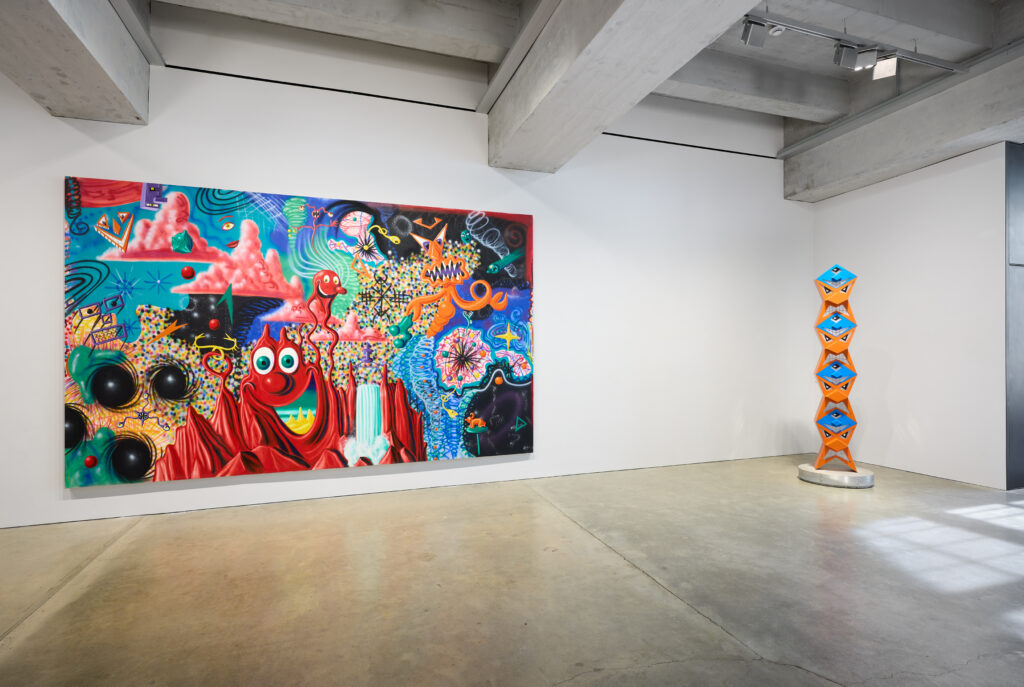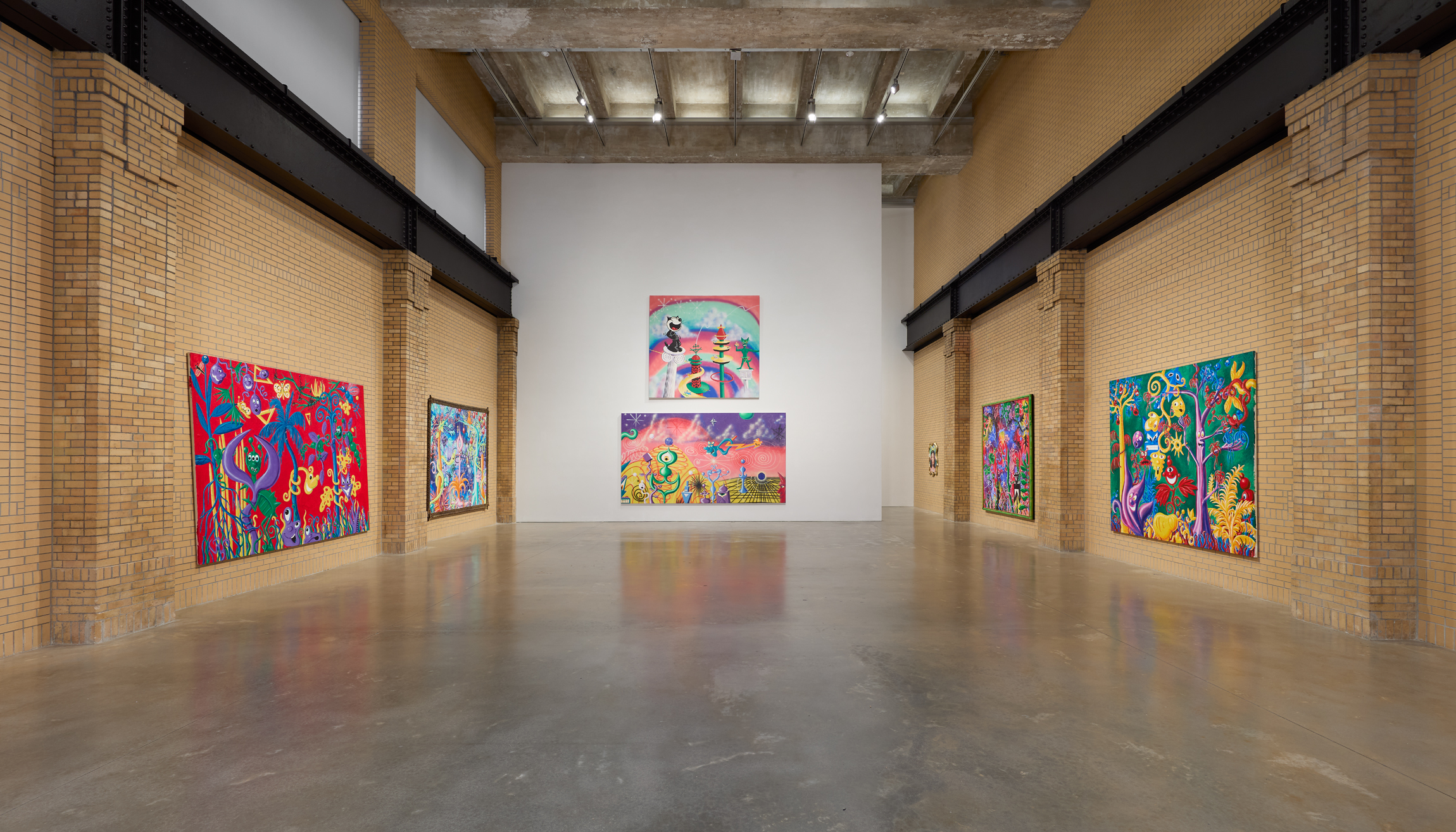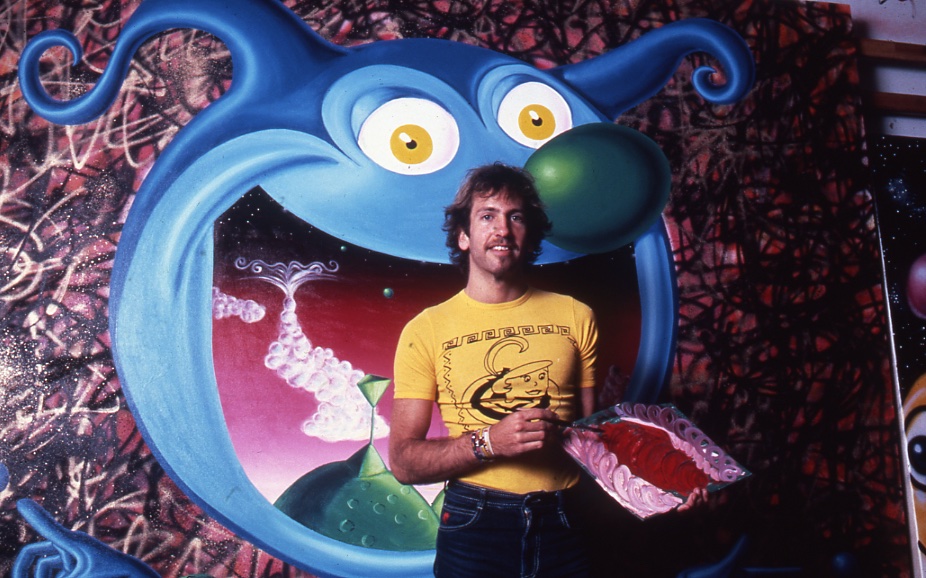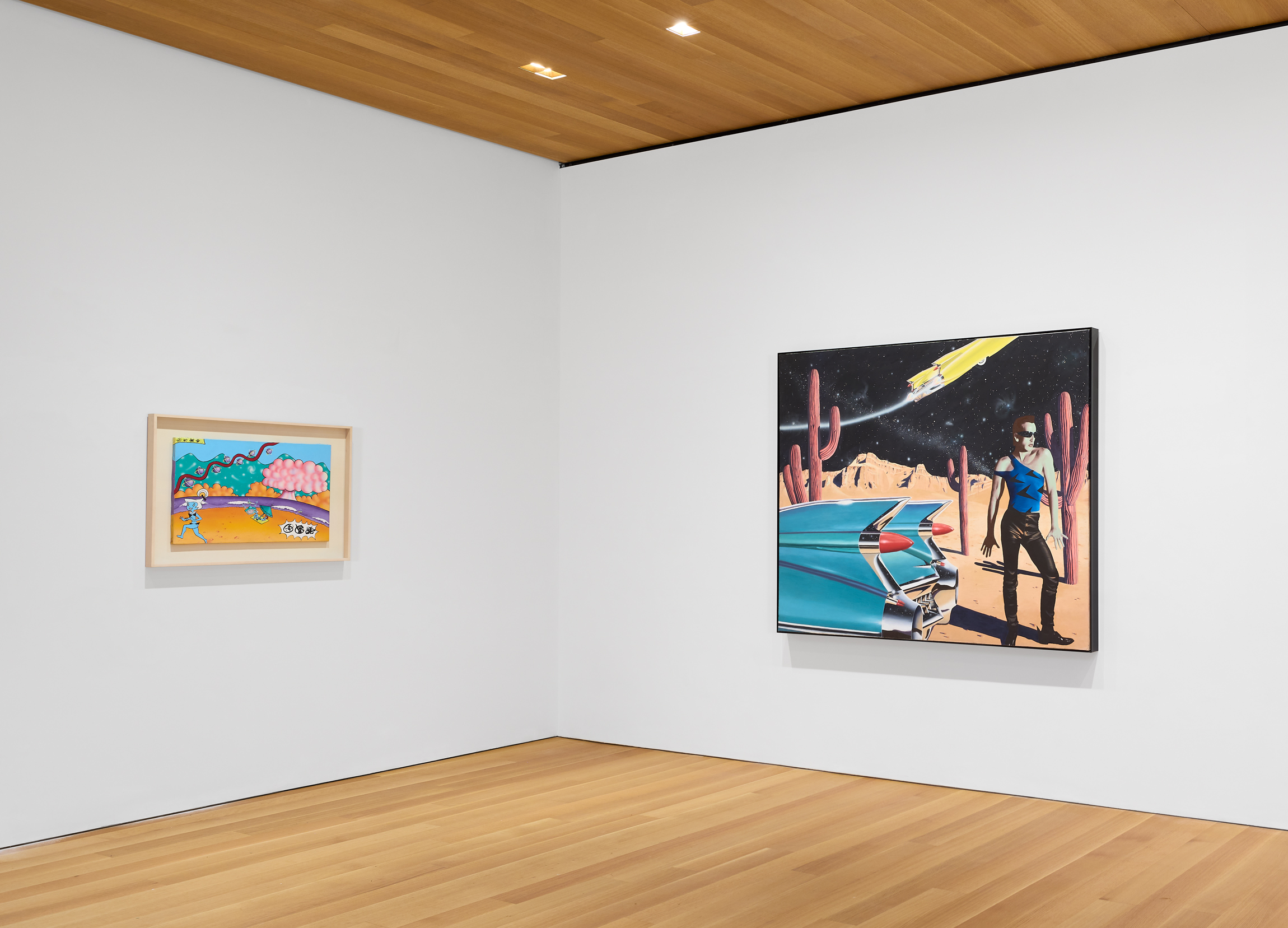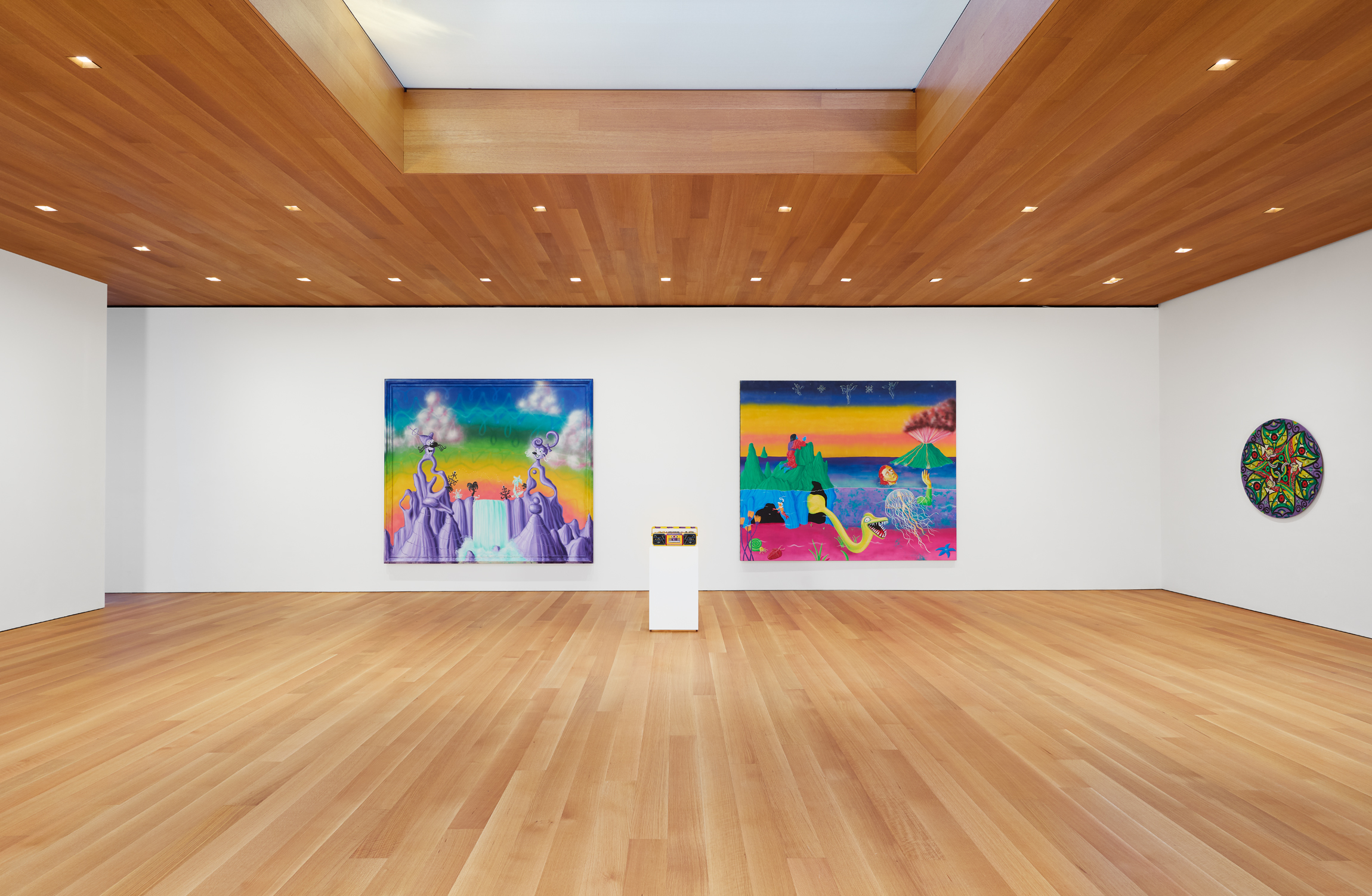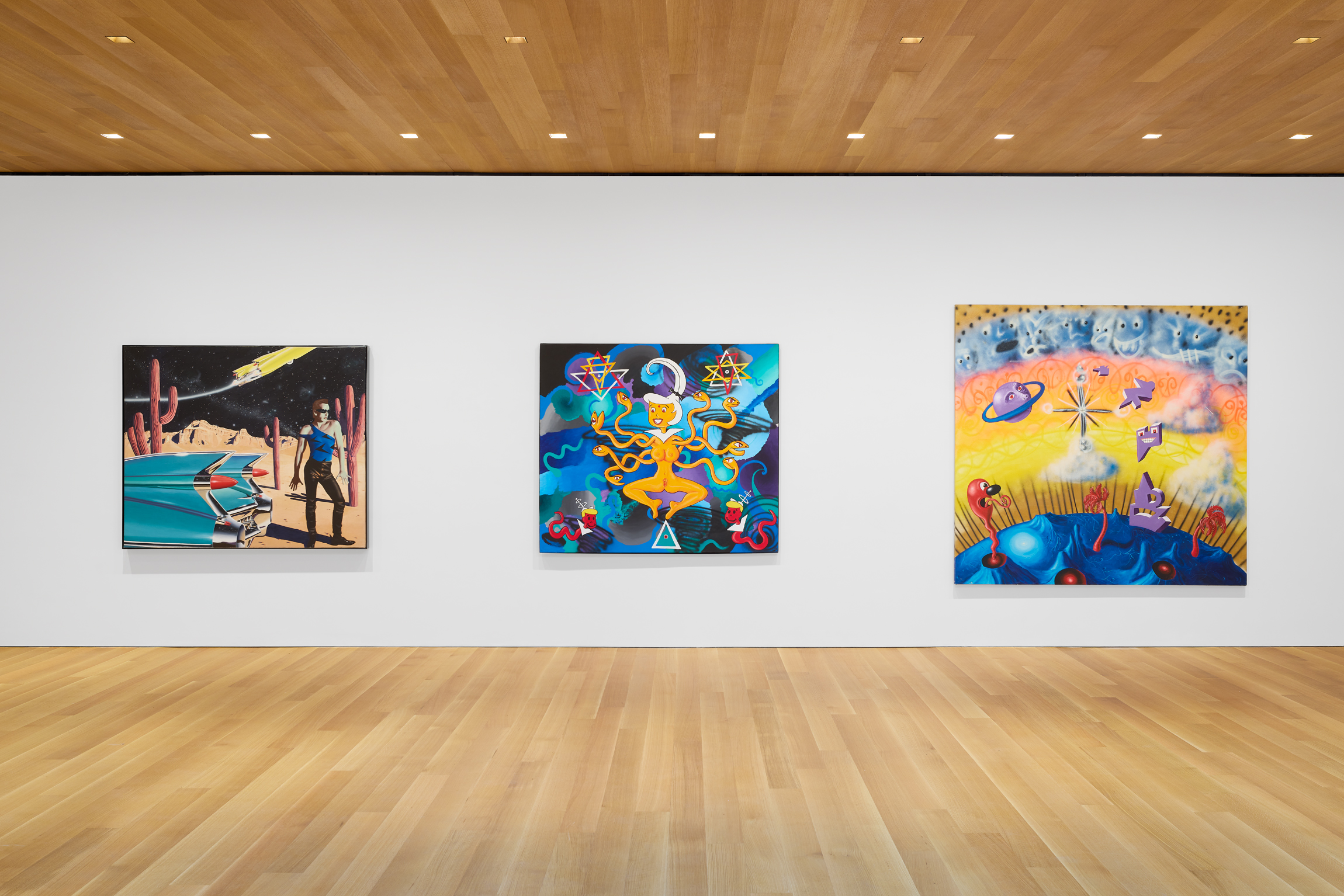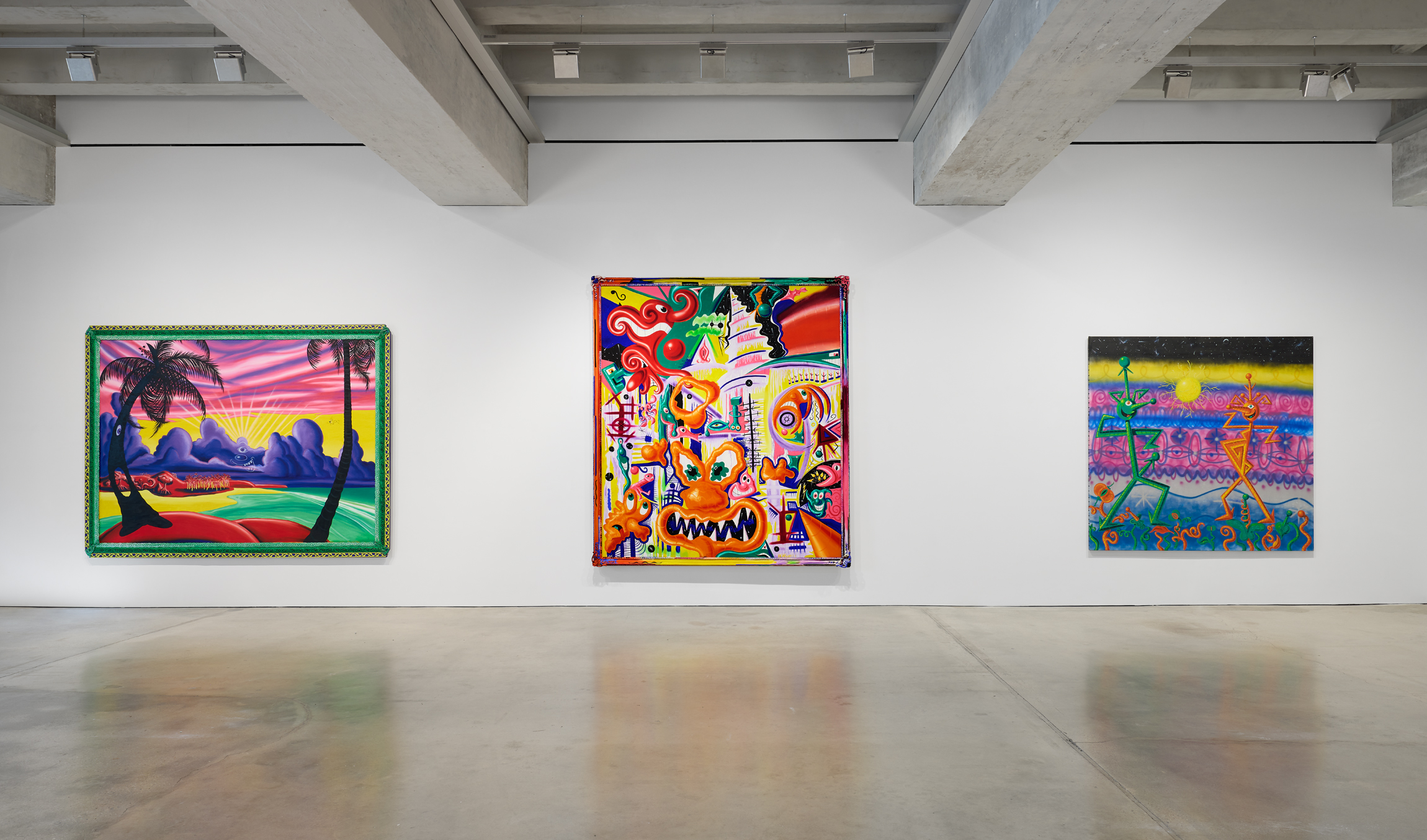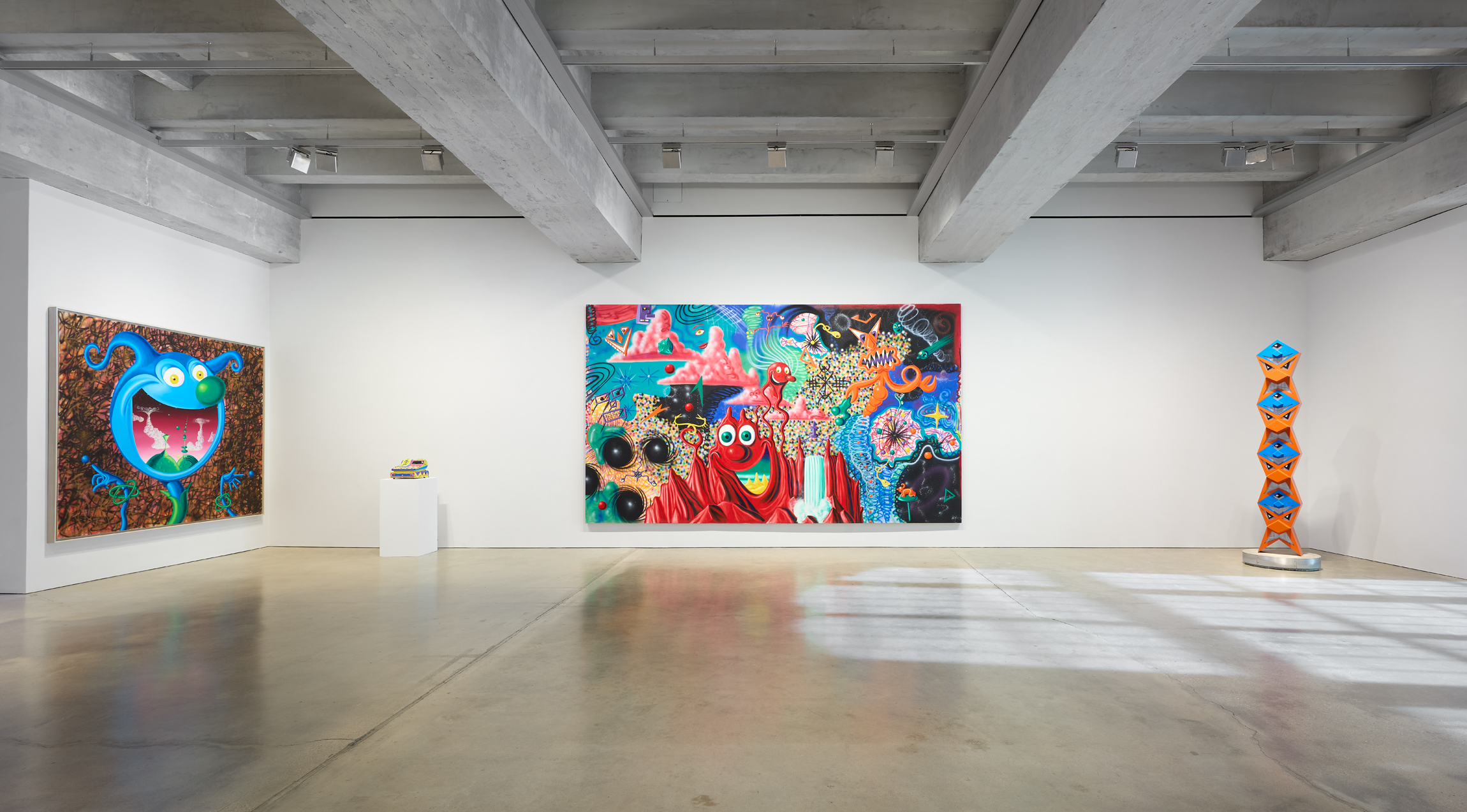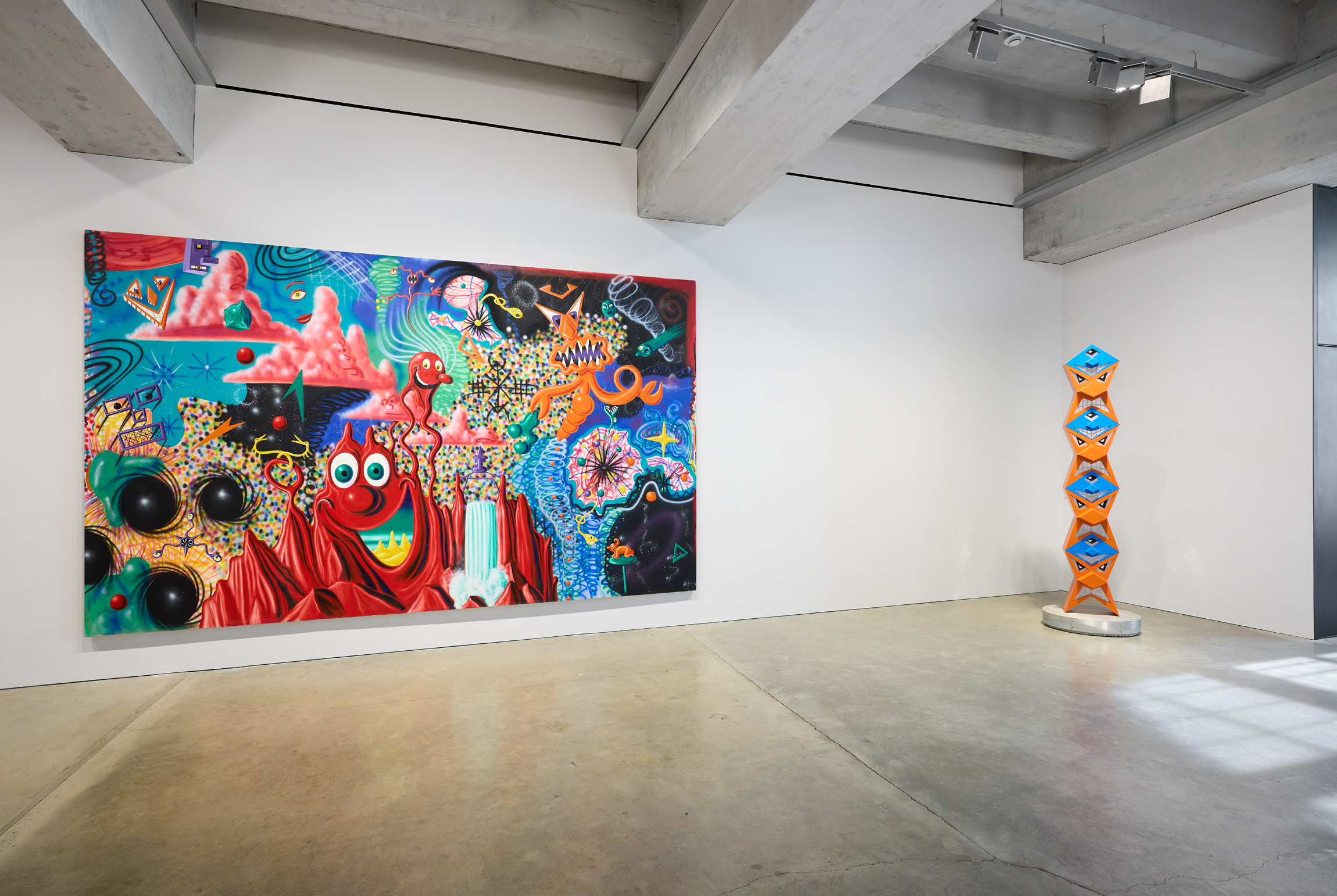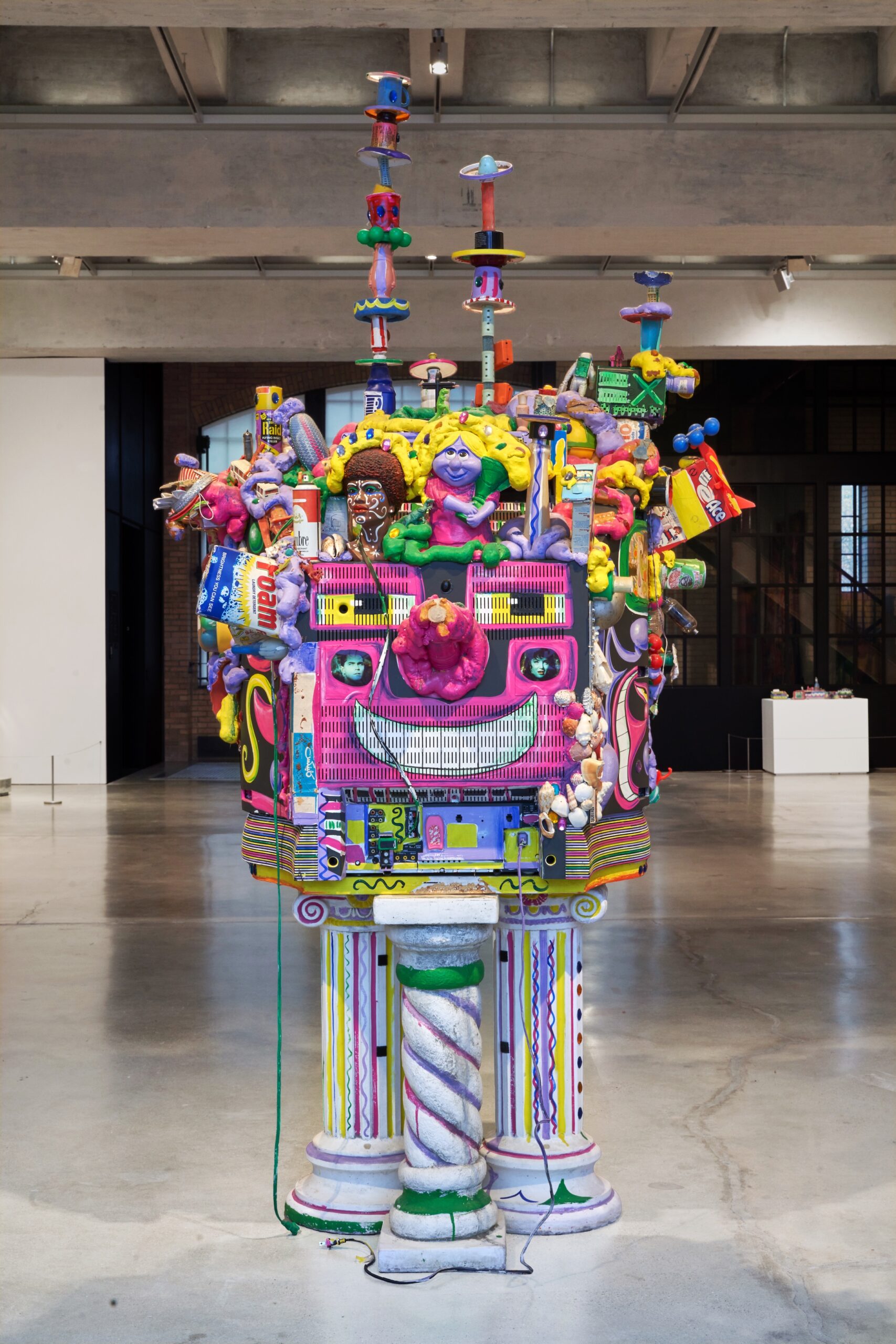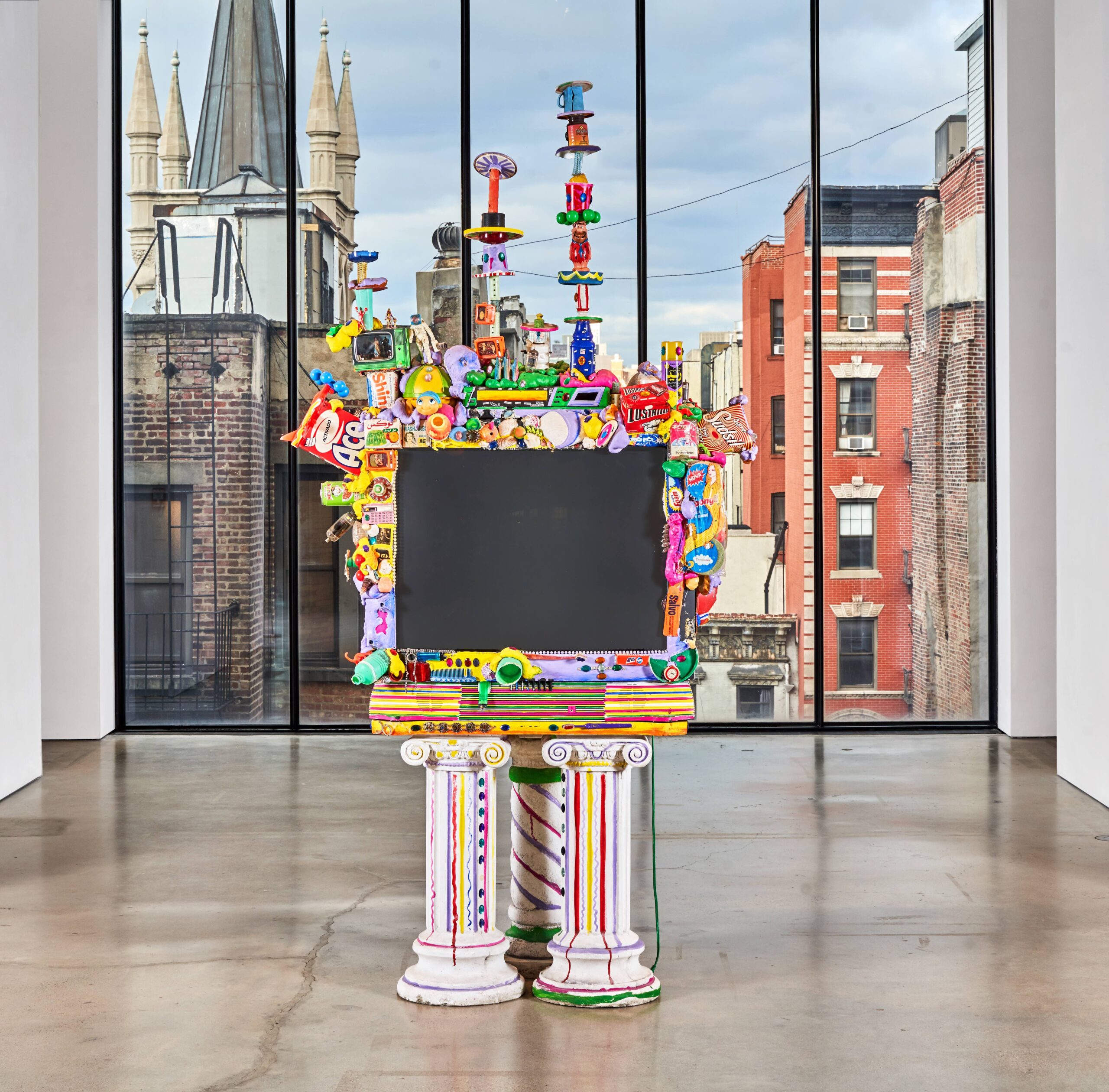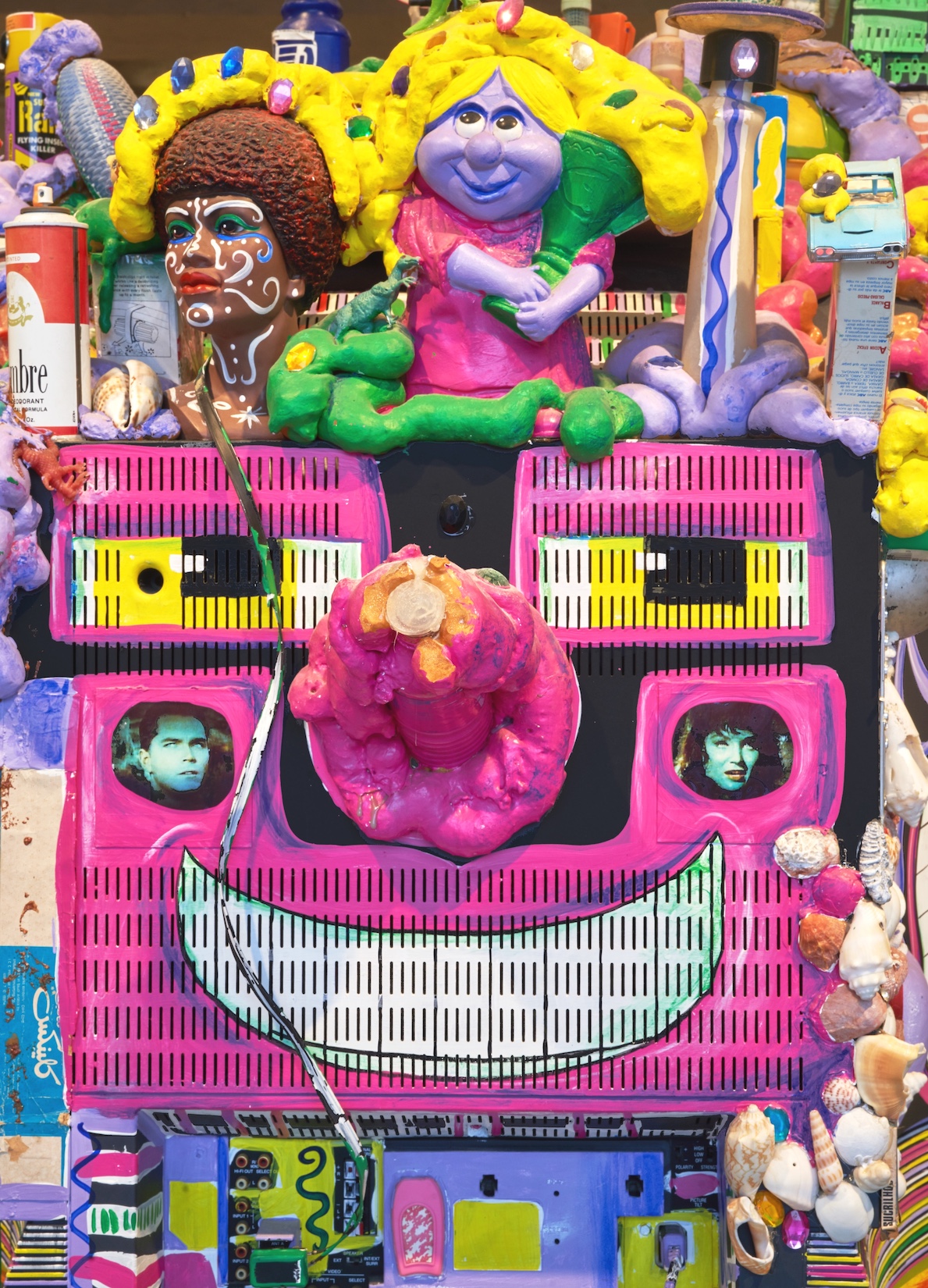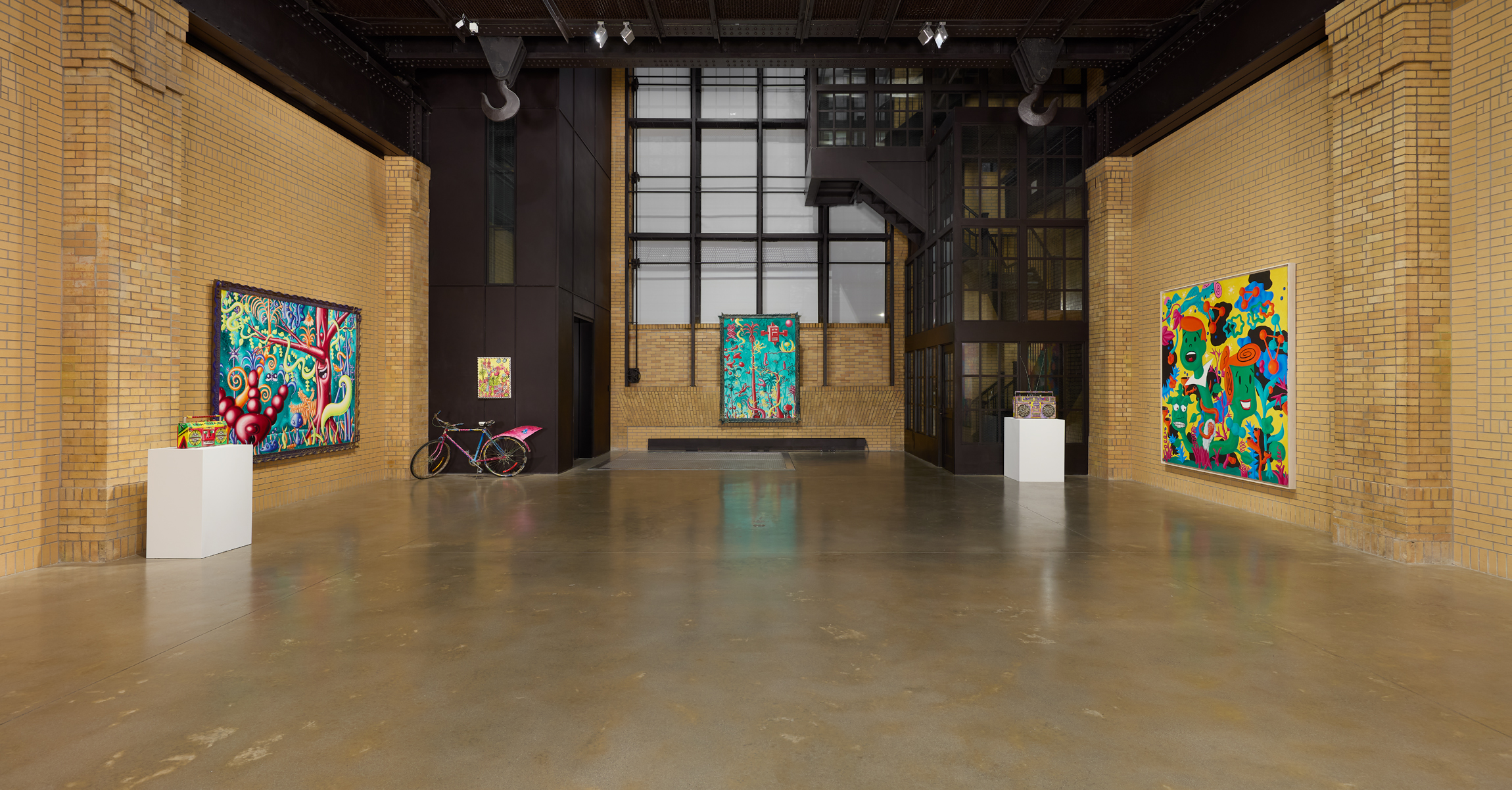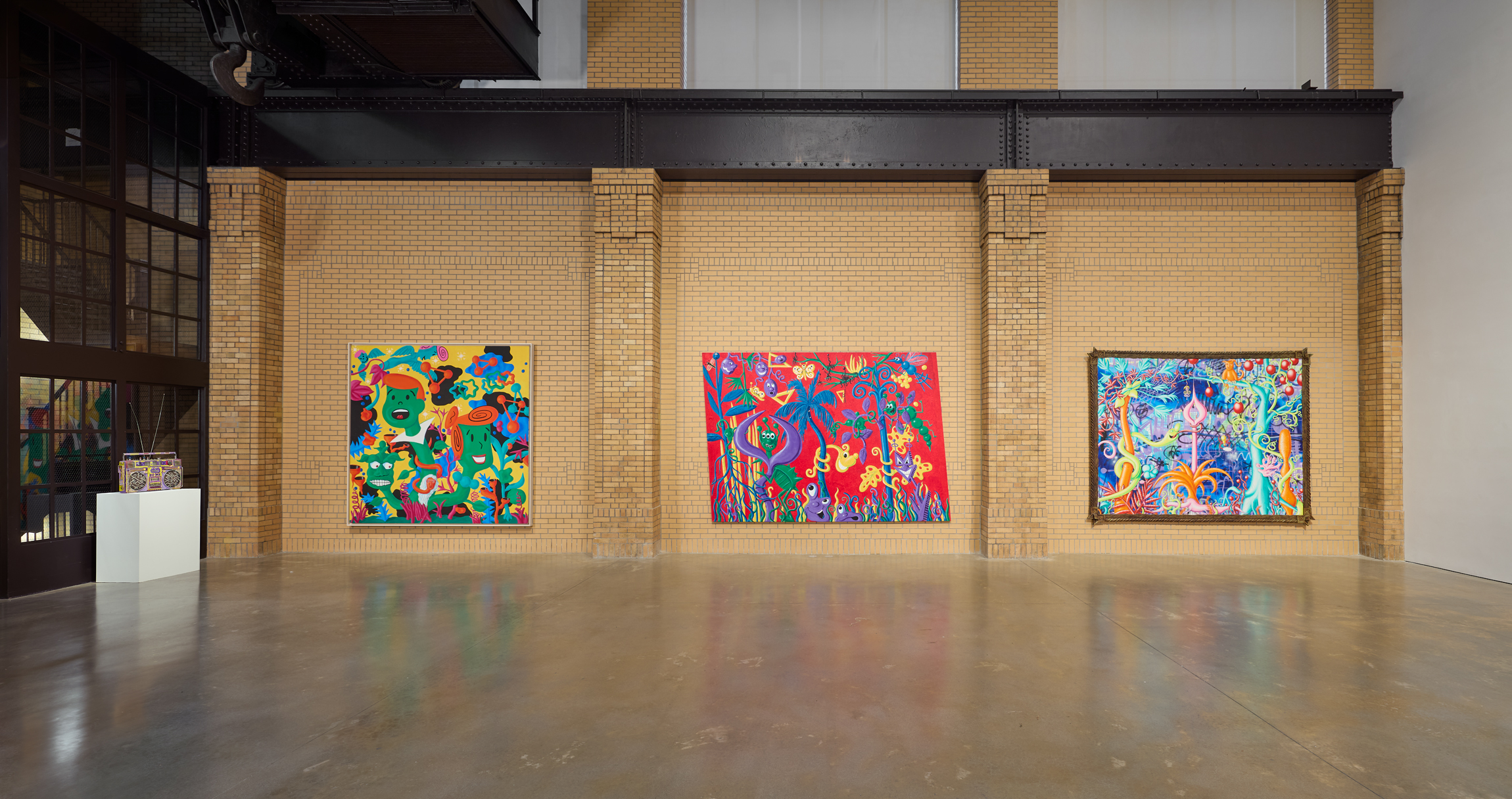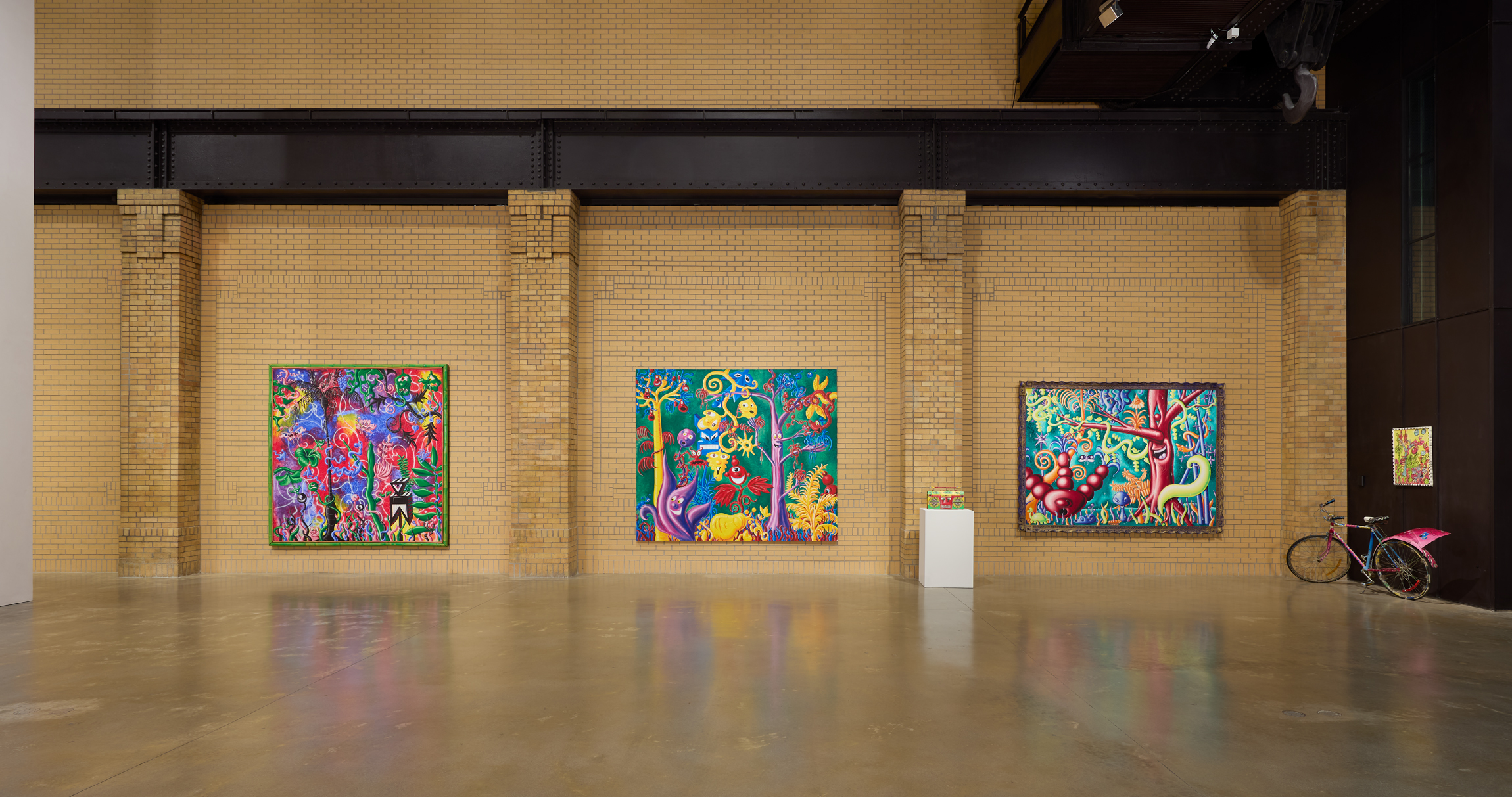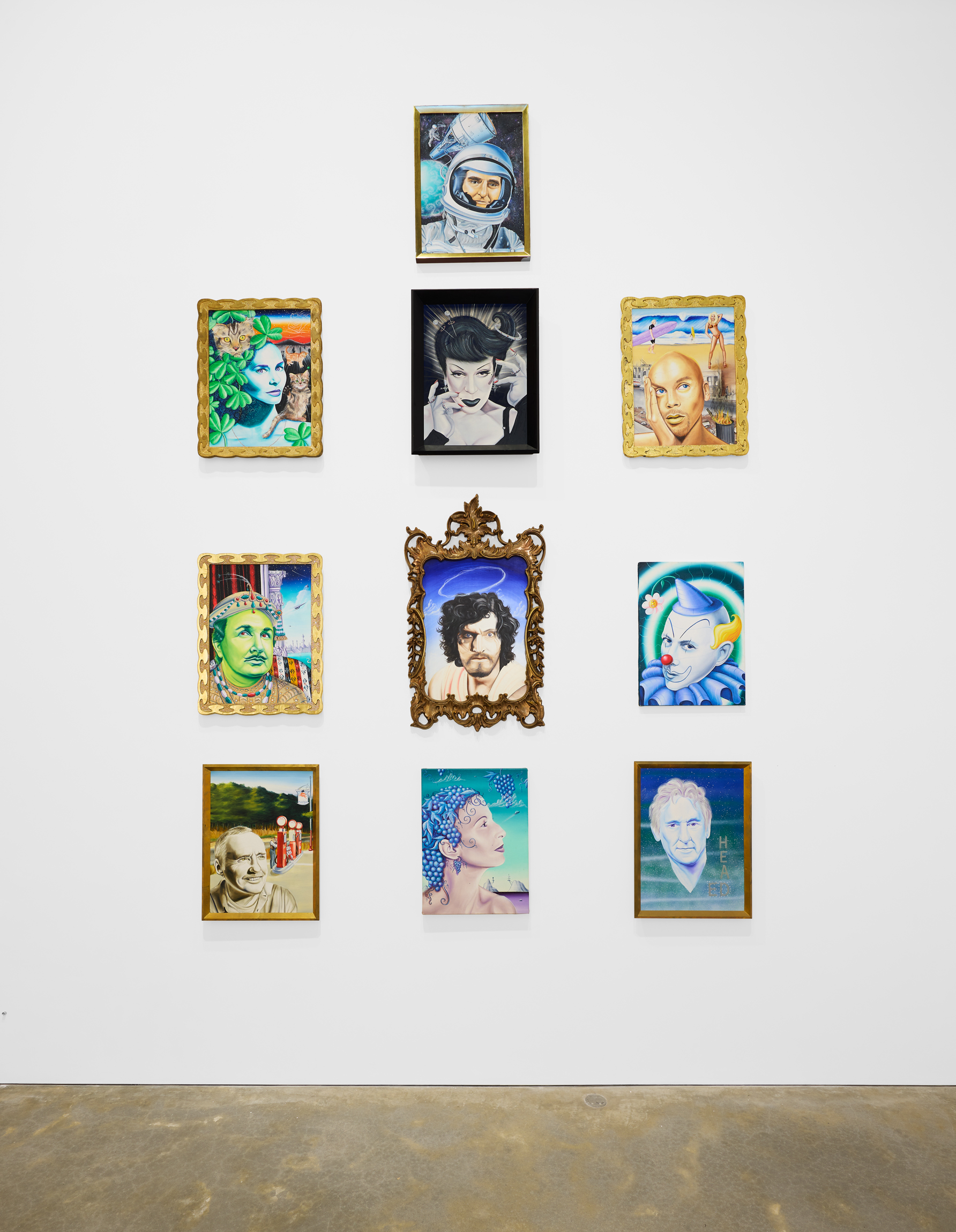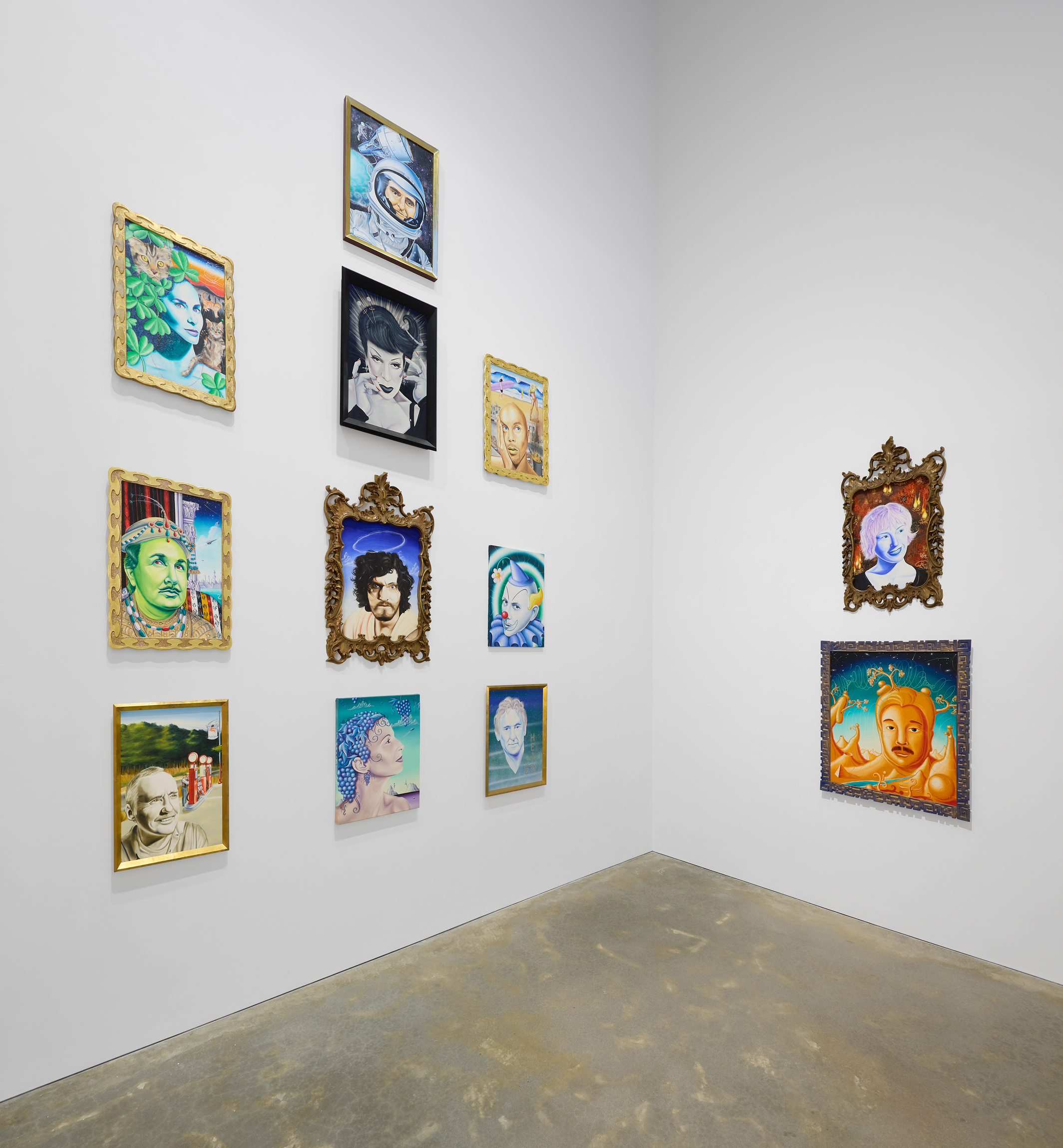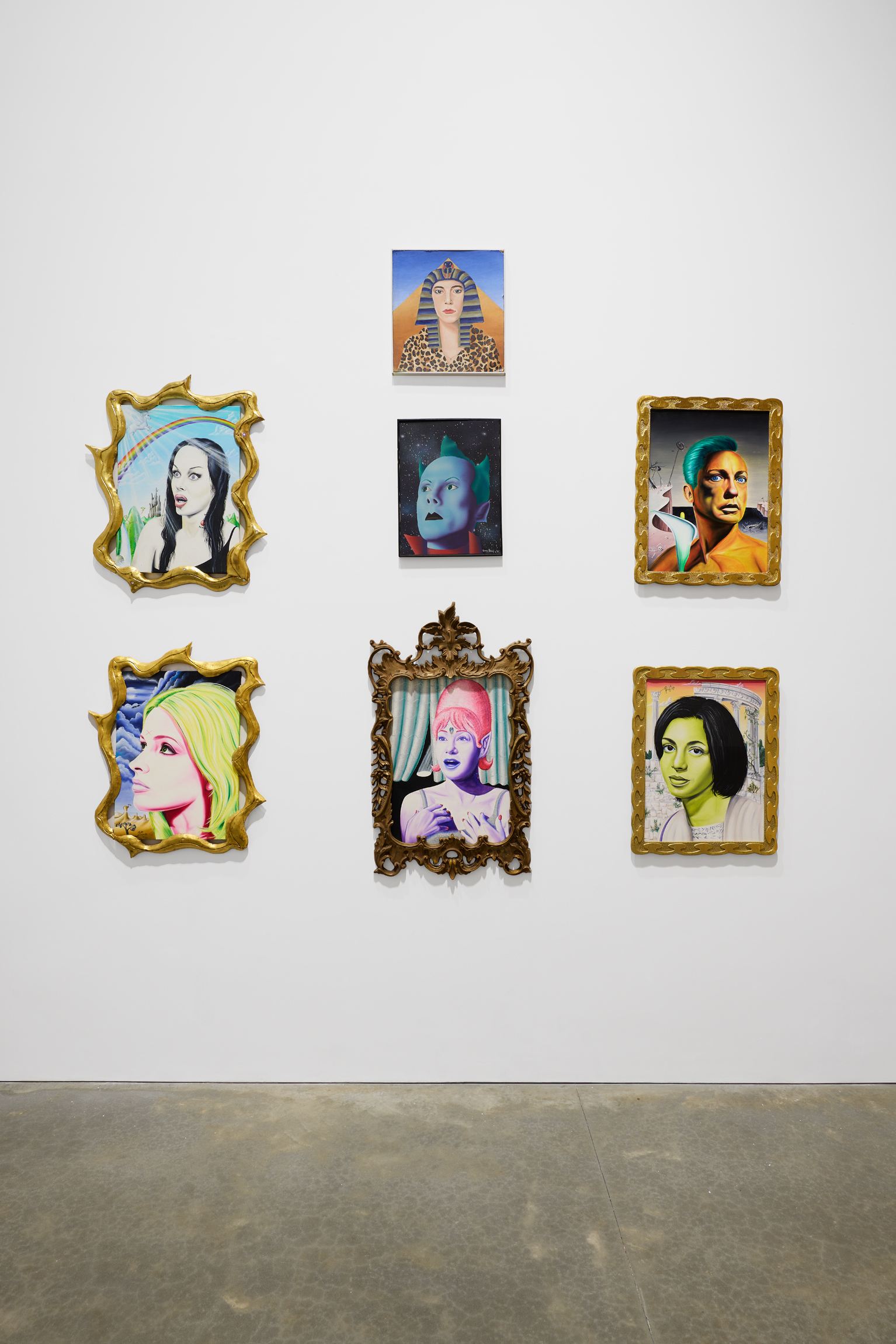Past Exhibition
- Kenny Scharf
Kenny Scharf
New York November 13th to February 28th, 2025
November 13, 2024 – February 28, 2025
Selected Press: Kenny Scharf at The Brant Foundation
PRESS RELEASE: The Brant Foundation is pleased to announce the opening of a major survey of pioneering artist, Kenny Scharf. Opening November 13, 2024, the exhibition brings together over 70 paintings, sculptures, and objects created throughout the artist’s expansive career, beginning with works from the late seventies. The survey is compiled from the Brant collections as well as major loans from institutions and private collections, including The Whitney Museum of American Art (New York) and The Broad (Los Angeles). Kenny Scharf is co-curated by Peter M. Brant and Tony Shafrazi in close collaboration with the artist.
Scharf’s surrealist, psychedelic scenes burst with a comical sensibility and playful spirit. His seminal painting, When the Worlds Collide (1984), which was included in the 1985 Whitney Biennial, is indicative of his enduring style and dynamic canvases. The artwork, created in a monumental scale, features cartoonish figures, whirling–almost moving–patterns, and highly contrasted colors. On the bottom right of the painting is Scharf’s version of Keith Haring’s classic baby figures, painted as an homage to the artist for allowing Scharf to use his studio to create the work. Scharf’s use of acrylic spray paint on canvas nods to his street-art style that was rarely seen or exhibited in museums or galleries. Scharf stated, “this painting is my idea of showing how everything exists at the same time. There’s peace; there’s chaos…everything exists all together.1” Whereas the painting is clearly influenced by “fun” as the artist has suggested, there is also an underlying anxiety to the work stemming from Scharf’s fear of nuclear catastrophe and other contemporary concerns. Amongst these chaotic scenes are Scharf’s jungle paintings, perhaps most notably Juicy Jungle (1984). Filled with characteristically amusing plants and figures with cartoonish faces, the canvas is absolutely brimming with color and action. In his pop-surrealist style, a term coined by Scharf, the artist toys with the balance between unease and humor in his encompassing works.
In addition to these outlandish figures, Scharf’s early works often meditated on contemporary society in caricatures of the middle-class set against apocalyptic scenes. George Simpson’s Barbecuing (1978) depicts the quintessential American man preparing hot dogs over a charcoal grill, yet instead of a backyard, this scene takes place in a bathroom where fictional vines grow from the sink and bathtub. In another painting from the same year, Barbara Simpson’s New Kitchen, a QVC-esque scene of a woman in a pink kitchen is interrupted by a dragon figure looking directly at the viewer. Both comic and subversive, Scharf conveys the angst around the failed promises of the American dream.
While Scharf is perhaps best known for his fantastical and metaphysical works, Kenny Scharf will also feature several portraits of the artist’s friends and other art-world contemporaries during the early 2000’s. In Baccanalba (Alba Clemente) (2003), the actress, artist, and costume designer is transformed as a wine goddess with blue grapes for hair, staring off into a strange world. Ed Head (Ed Ruscha) (2001) portrays the fellow artist as a detached blue-skinned head floating through space; and writer, musician and poet Patti Smith is depicted as a Pharaoh wearing a leopard fur coat in Patti Smith (1978). These portraits show a lesser-known side of Scharf’s work—his circle of friends and collaborators.
Kenny Scharf’s ingenuitive and unconventional attitudes towards art is a source of inspiration to a number of artists today. With this exhibition, the Brant Foundation’s East Village location continues its commitment to showcasing major exhibitions of artists associated with the neighborhood’s historical and pivotal art scene. After previous exhibitions of Jean-Michel Basquiat (2019) and Andy Warhol (2023), Kenny Scharf, brings a major survey of Scharf’s work back to his roots.
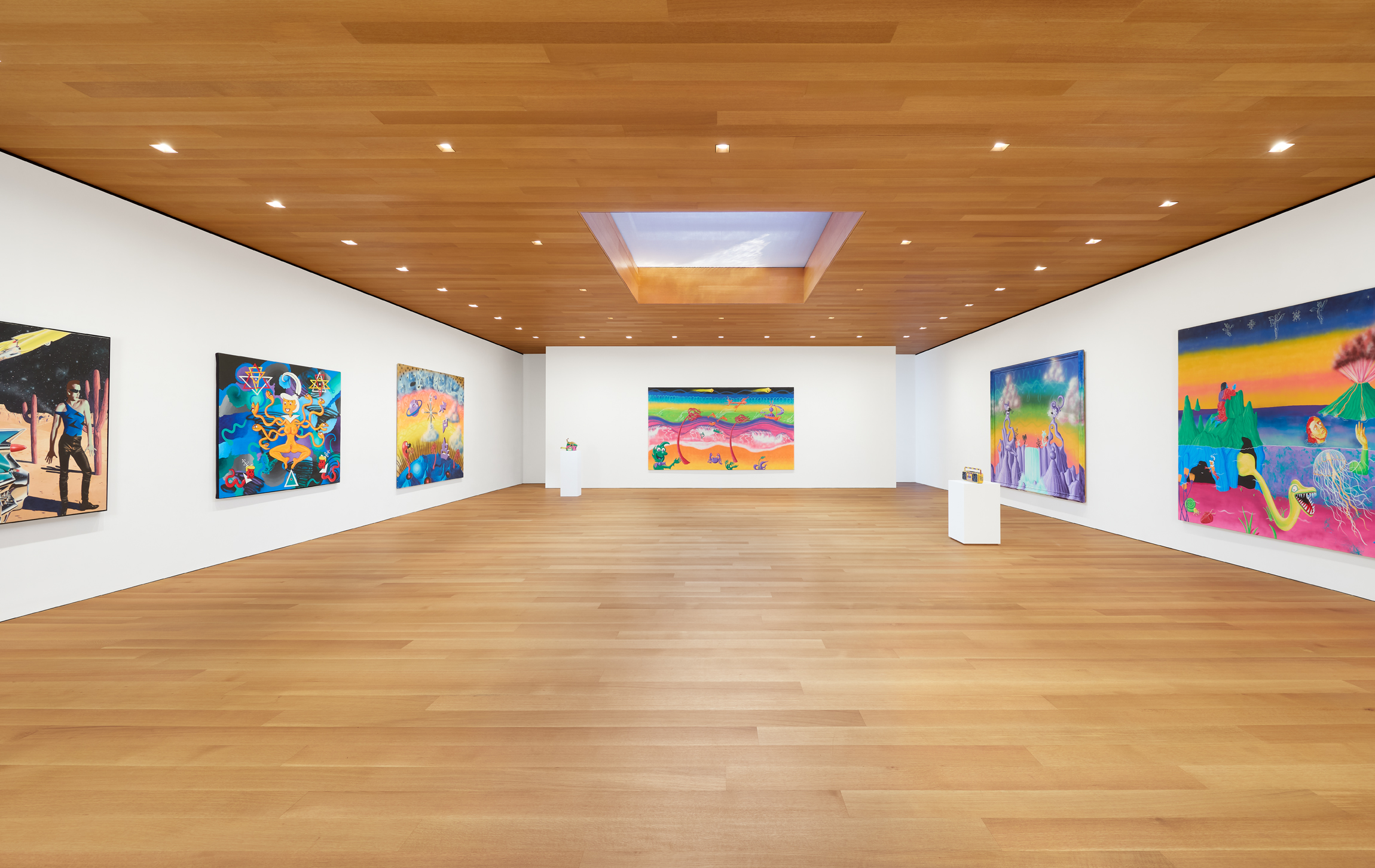
Rising to popularity in the 1980s, during the East Village’s vibrant interdisciplinary art scene, Kenny Scharf pioneered the street art movement alongside peers such as Keith Haring and Jean-Michel Basquiat. Scharf articulated a distinct artistic language that has endured throughout his practice. During this period, he also counted Warhol as a mentor, and the famed pop artist’s impact on the young Scharf can be seen today in his appropriation of comic book figures and other pop culture icons, such as cartoon characters from The Jetsons and The Flintstones.
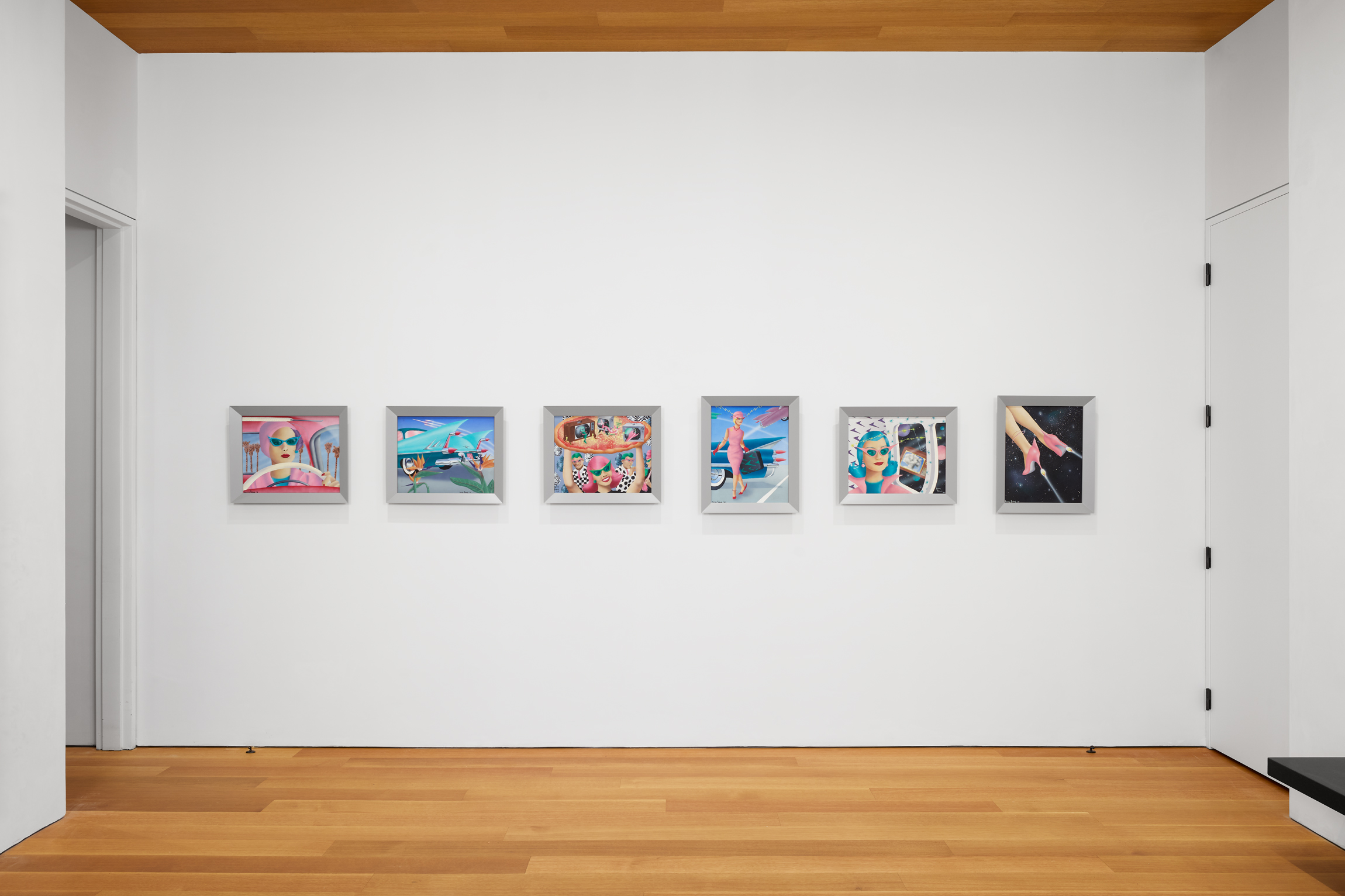
The Death of Estelle
The Death of Estelle paintings are about a woman named Estelle who is a lone survivor flying through space after escaping the nuclear destruction of Earth. These paintings embody Scharf’s interest in escapism, fun, and space-age iconography. Like Barbara Simpson, Estelle appears fashionable, happy, in control, and unphased by danger. Estelle is the epitome of idealized Space Age Americana and consumer culture.
As Kenny recalls, “There was one painting of her at a television/pizza party where she holds up this pizza that has TV sets and Martians coming out of the televisions. The Martians give her a one-way ticket into space. The next shot is her inside her plane, and she’s looking out the window at Earth. There’s a TV set with a nuclear bomb and she’s looking at the world exploding.” Despite the impending doom, Kenny was very passionate that “the theme was always about enjoying the moment, because it can end any day.”
Source: Daichendt, G. James, Ann Magnuson, Iain R. Morris, and Amy Wheless. Kenny Scharf: In Absence of Myth. Petaluma, CA: Cameron + Company, 2016, p.106-109.
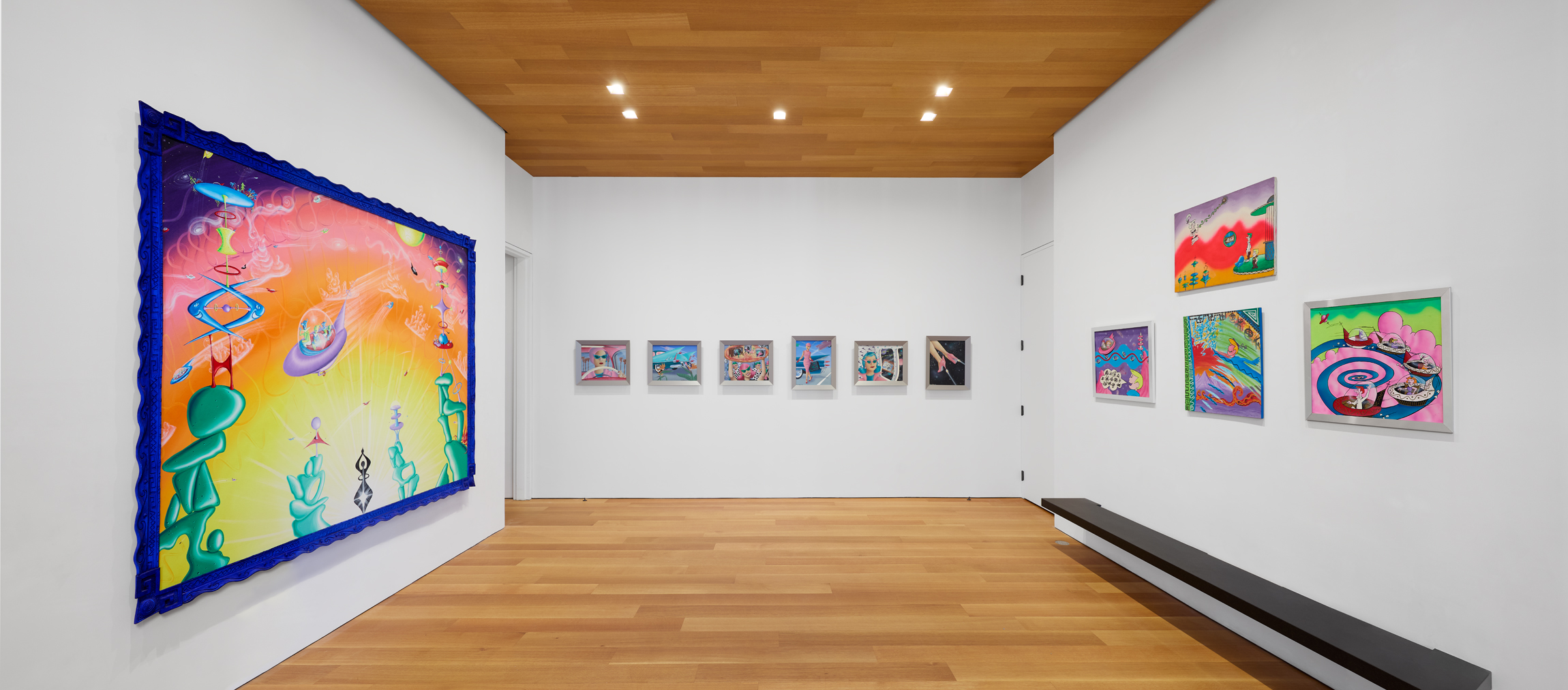
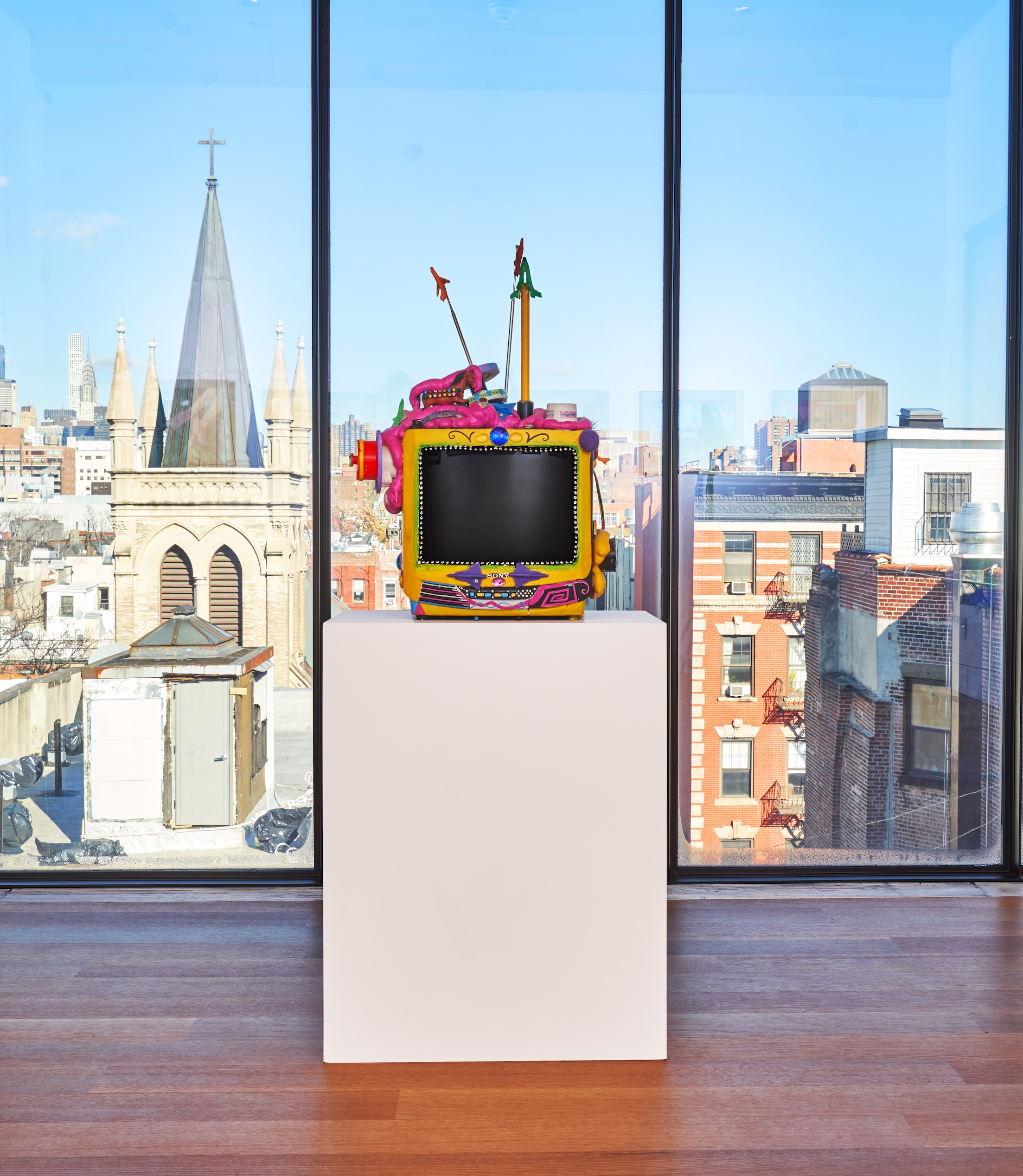
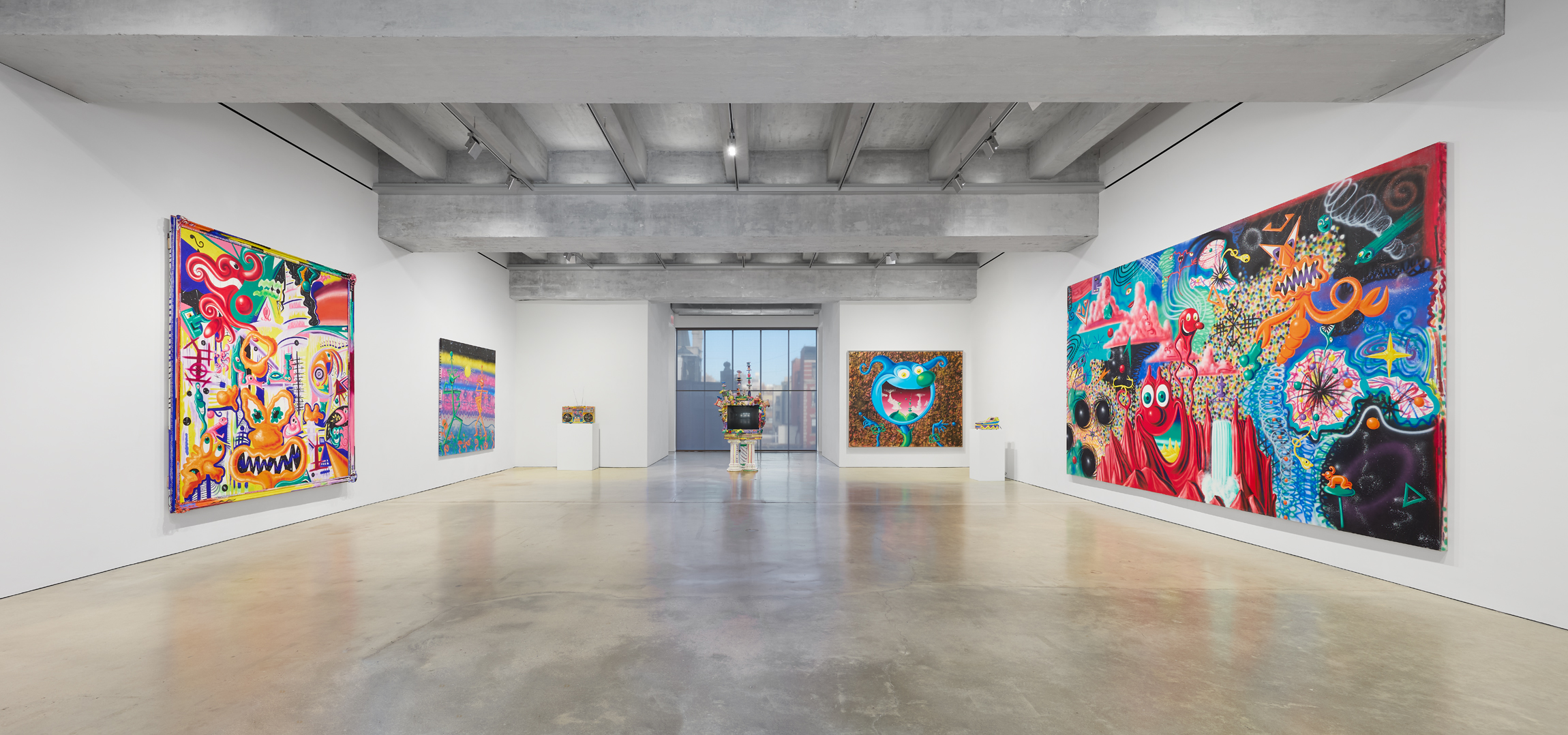
“I’ve been working with found objects—often household electronics and appliances—for forty-something years, and it occurred to me a couple years ago that I should turn the TV backs into refined oil paintings and make them precious. They end up becoming very mask-like, almost a combination of tribal and robotic.”
– Kenny Scharf, from: Slenske, Michael. “We Visit Kenny Scharf’s Awe-Inspiring New Studio as He Readies for the Spotlight.” Galerie, August 24, 2018.
"Customizing is saying, It’s plastic anyway, so go all the way....I hate fake natural, and when everything is the same, just sitting there, it’s so boring right? I like to fill things up, transform things - it’s like I feel better around all the stuff. Like what I did at the Palladium."
– Kenny Scharf, from “Kenny Scharf, ARTnews September 1985.” ARTnews 85, no. 5, September 1985.
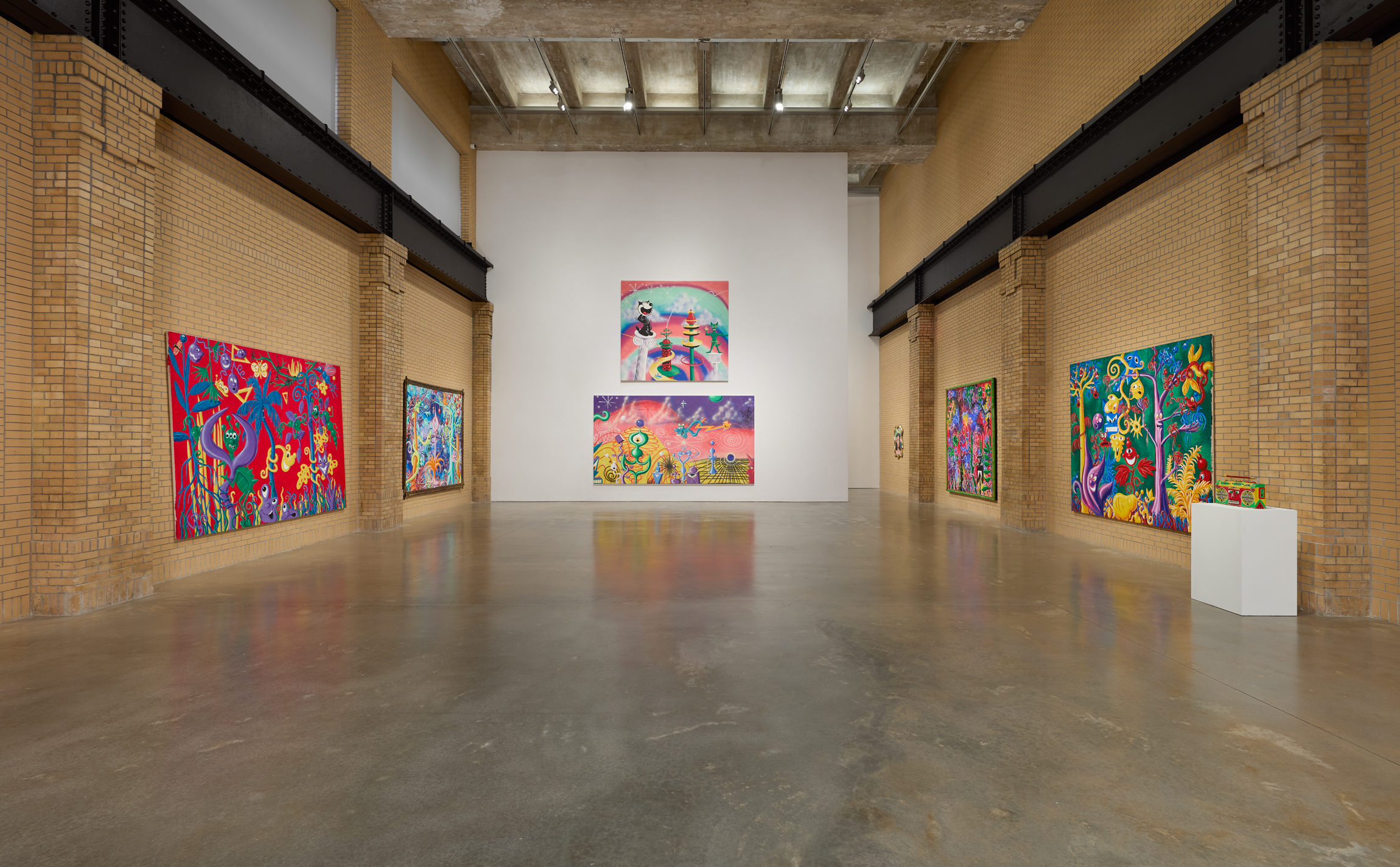
“Surrealism is about the unconscious, and I feel my work is about the unconscious. The images come from the unconscious, except that my unconscious is filled with pop imagery. My unconscious is pop, so therefore the art would be pop surrealism.”
– Kenny Scharf
